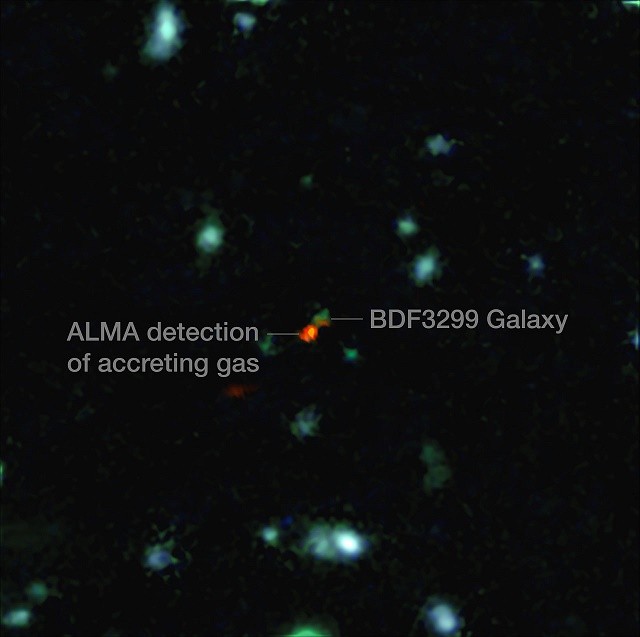Astronomers have detected for the first time a very ancient line of galaxies that are located in the deep void of the universe using the ALMA (Atacama Large Millimeter/submillimeter Array) telescope in Chile. Cosmic gas clouds are seen enshrouding the first galaxies of the universe including superclusters of interstellar systems.
Since it takes light years for light to travel across our solar system from those ancient galaxies, these star formations were observed when they were newly created in the universe.
Astronomers turned to the powerful observations of the ALMA telescope to view these past galaxies, quasars and other cosmic objects. Astronomers were also able to observe and detect these oldest known galaxies that date back to 800 million years just right after the Big Bang event.
One of the ancient galaxy clusters called the BDF 3299, is where astronomers were also able to pick up the presence of a significant amount of glowing carbon. According to co-author of the study, Andrea Ferrara of the Scuola Normale Superiore, Italy, to date, this is the most distant detection of this kind of emission from a normal galaxy that is observed after less than 1 billion years following the Big Bang.
This new discovery can now allow astronomers to further examine galactic formations from the ancient universe, marking this the first time for astronomers to embark on such a project.
Ferrera also adds that astronomers have been keen on understanding the interstellar medium in which the formation of the reionization process can now be somehow observed. This study can finally test predictions from real data from ALMA where it can clarify problems about how first stars are formed in galaxies in the universe, in general.
During the infant stages of the universe, dusty clouds of gas absorbed the first light and generated the first stars. When these hot, young stars burned fast due to a reionization process, the light from these stars first streamed and was scattered throughout the void of deep space.
In this particular observation of BDF 3299, there is a glowing gas cloud where a region with this material would make contact and spur activity from the galaxy. This observation is now suggesting that when this cloud of early ancient dust and gas and the first ancient galaxy interacted, this is apparently a reionization in the process, triggering the first galactic formations in the universe.



























